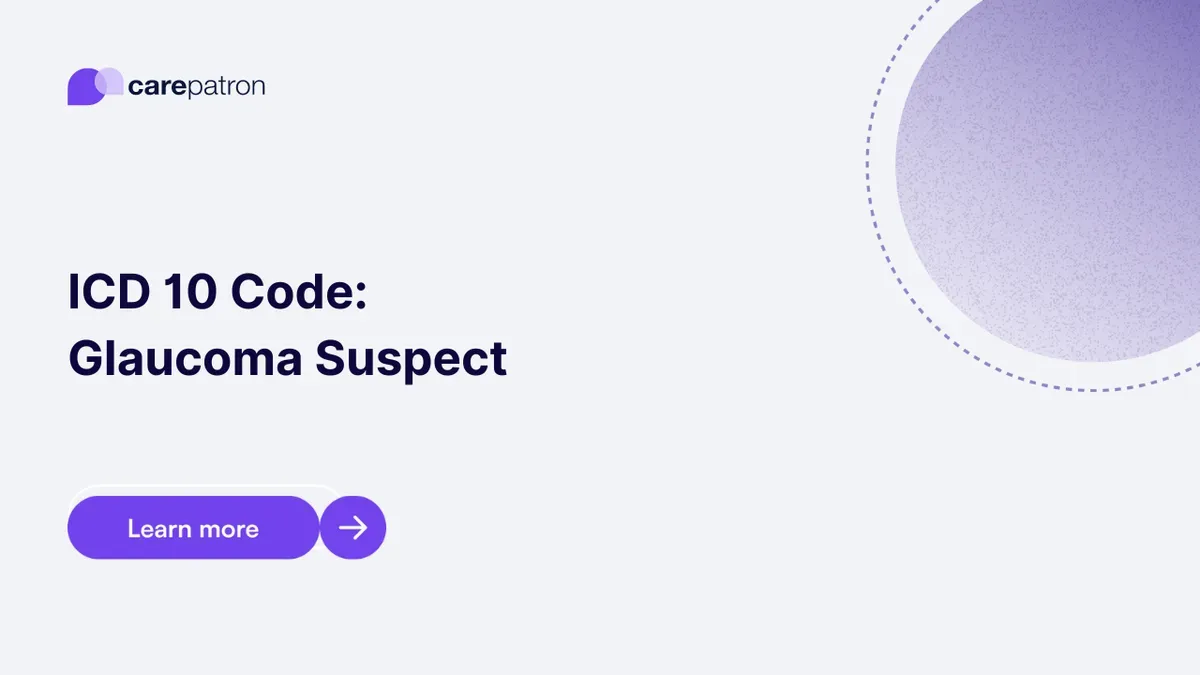
Glaucoma Suspect ICD-10-CM Codes
Learn how ICD-10 Codes Used for Glaucoma Suspect help healthcare professionals identify individuals with risk factors for glaucoma, even before symptoms manifest.
Use Code
Commonly asked questions
A Glaucoma Suspect ICD code is used when a patient exhibits one or more risk factors for glaucoma, such as elevated intraocular pressure, family history of glaucoma, thin optic nerve rims, or certain medical conditions, but does not yet show any signs or symptoms of the disease. It helps healthcare professionals categorize individuals at risk for glaucoma, facilitating monitoring and early intervention.
Common treatments for Glaucoma Suspect Diagnosis Codes include medication to lower intraocular pressure (IOP), lifestyle modifications like smoking cessation and regular exercise to reduce risk factors, and, in some cases, surgical procedures to manage IOP. The specific treatment depends on the patient's circumstances and the severity of their glaucoma risk.
A diagnosis code for Glaucoma Suspect indicates that the patient has one or more risk factors for glaucoma, but there is no definitive diagnosis of glaucoma at that point. It serves as a warning or classification to healthcare providers that the individual should be closely monitored to detect any early signs or symptoms of glaucoma and initiate timely treatment if necessary.
EHR and practice management software
Get started for free
*No credit card required
Free
$0/usd
Unlimited clients
Telehealth
1GB of storage
Client portal text
Automated billing and online payments
